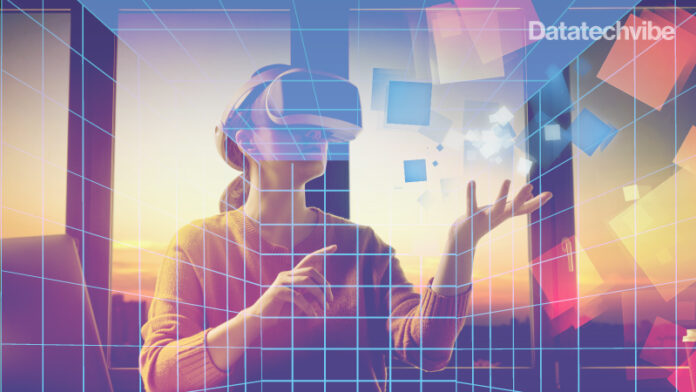The metaverse is now allowing enterprises to reset their balance between hybrid and remote work
What if you can have a beachside conversation with colleagues, take notes while floating in a space station, or move from your office directly to a cafe for a meeting – all without stepping outside your home? Are you feeling pressured with too many meetings scheduled today? Send your AI-enabled digital twin instead. These are a glimpse into the future of work promised by “the metaverse workspace”.
Emerging next-gen technologies have many convenient alternatives to traditional work, and the metaverse is set to reshape workspaces in four significant ways:
- new immersive ways of team collaboration
- the emergence of new digital, AI-enabled colleagues
- the acceleration of learning and skills acquisition through virtualisation and gamified technologies
- the eventual rise of a metaverse economy with completely new enterprises and work roles
The new normal?
Meta CEO Mark Zuckerberg claims that the metaverse will open up new possibilities and forms of work, what he calls an “infinite office,” and reshape the digital economy. Last September, Facebook Connect introduced a unique virtual office experience for those who work from home: Infinite Office, which promised to make WFH much more immersive. The tech giant also announced Horizon Workrooms, a virtual meeting space where coworkers can join a virtual reality (VR) meeting as an avatar or dial into the virtual room from a computer by video call.
Horizon Workrooms allows its users to create avatars, collaborate with colleagues on a whiteboard, stream what’s on their laptop, take notes, and interact with coworkers who video conference into the virtual room, all while sitting in their physical, actual workspace. Workrooms are part of Meta’s broader ambitions to evolve the metaverse further.

Current adoption
Current research shows that virtual-world training can offer substantial advantages over traditional instructor or classroom-based training. It now provides greater scope for visually demonstrating concepts and work practices, better opportunity for learning by doing, and higher engagement through immersion in games problem-solving through “quest-based” methods. VR tools can now combat personality issues such as social anxiety in work environments, for example, by creating realistic but safe spaces to practice public presentations and meeting interactions.
The metaverse revolutionises training and skills development, drastically compressing the time needed to develop and acquire new skills. VR technologies are already being adopted and used in many sectors to accelerate skills growth. Surgical technology conglomerate Medivis is using Microsoft’s HoloLens technology to train medical students through interaction with 3-D anatomy models, and leading manufacturers Bosch and the Ford Motor Company have inculcated a VR-training tool, the Oculus Quest headset, to train their technicians on electric vehicle maintenance.
As the core capabilities needed for workers across industries change and new skills are increasingly required, more than one billion workers are expected to need reskilling by the year 2030, according to The World Economic Forum research. A recent Accenture study found that 90 per cent of executives believe that their existing training methods need to be more effective and efficient, and 94 per cent of workers indicated they would stay at a company longer if it invested in their career development.
Immersive learning using extended reality (XR) technologies offers opportunities for employees to participate in “hands-on” learning that has been shown to lead to more excellent learning retention.
Recently, Accenture made a strategic investment in Strivr, a provider of VR–based, immersive learning and training solutions for enterprises. Strivr’s VR training platform helps enterprises increase the efficiency and efficacy of their employee skilling and upskilling initiatives while also delivering data-driven insights that further inform and enhance their broader enterprise talent development efforts.
As per reports, learning through VR is 30 per cent to 40 per cent more productive than traditional means, and Accenture wants to make a great use case of that in its work environment. The company has launched the One Accenture Park, a shared virtual space that enables immersive onsite experiences for employees and clients, interactive showcases, and hands-on demonstrations.
The metaverse can also offer multiple implementations based on what’s being simulated. And as we create digital twins of offices and employees, it can help companies test theories on productivity before they become viable. Currently, the metaverse is used mainly for simulation, and when tied to actual data like that produced by security systems, it can simulate a working environment at scale.
That allows tools to be used to both highlight anomalies and simulate fixes before they are rolled out. Over time, a paired simulation using direct-learning AI models should be able to anticipate how a group of employees is functioning and allow you to trial policies against a virtual group of employees without the actual employees being affected.
Workplace of the 2020s already looks different from what we could have fathomed just a couple of years ago. With use cases yet to be explored, the metaverse seems to allow enterprises to reset their balance in hybrid and remote work.
Aiding in recapturing the spontaneity, interactivity, and fun of team-based working and learning while maintaining the flexibility, productivity, and convenience of WFH. With most of the technology and infrastructure currently in place, large enterprises are expected to act fast to keep up with metaverse’ technologies and virtual services. The metaverse will only be successful if deployed as a tool for employee engagement and experiences, not for supervision and control. Guided by these principles, business leaders can start to imagine and create their future workplaces.
If you liked reading this, you might like our other stories
A Touch of Reality: AR, VR, and MR
How VR/AR Is Aiding On-Job Training









